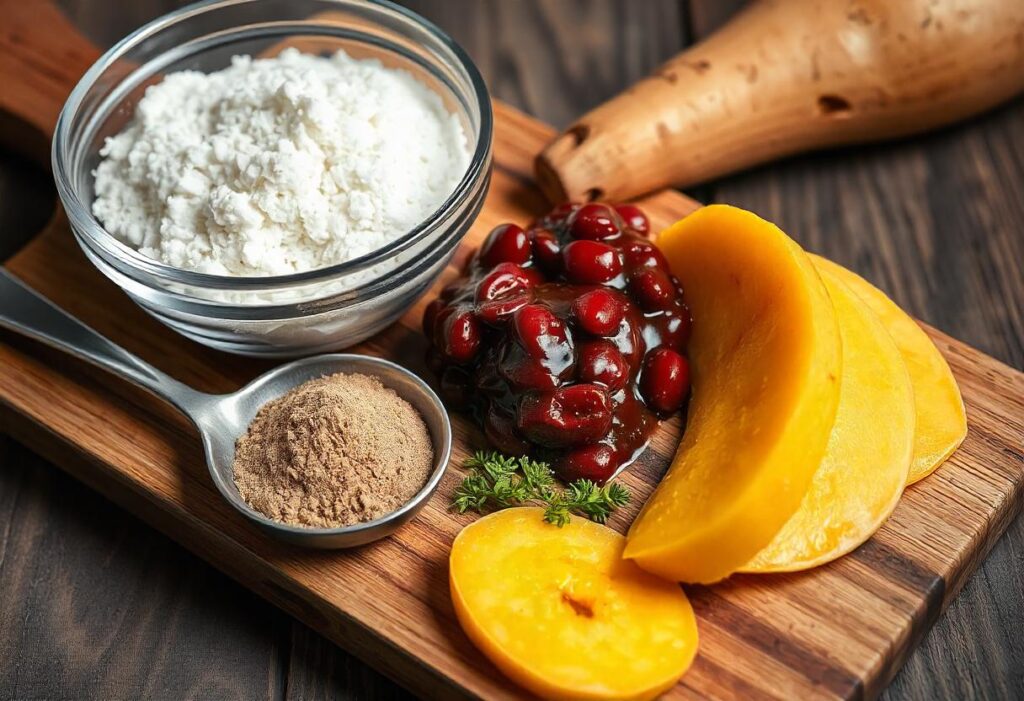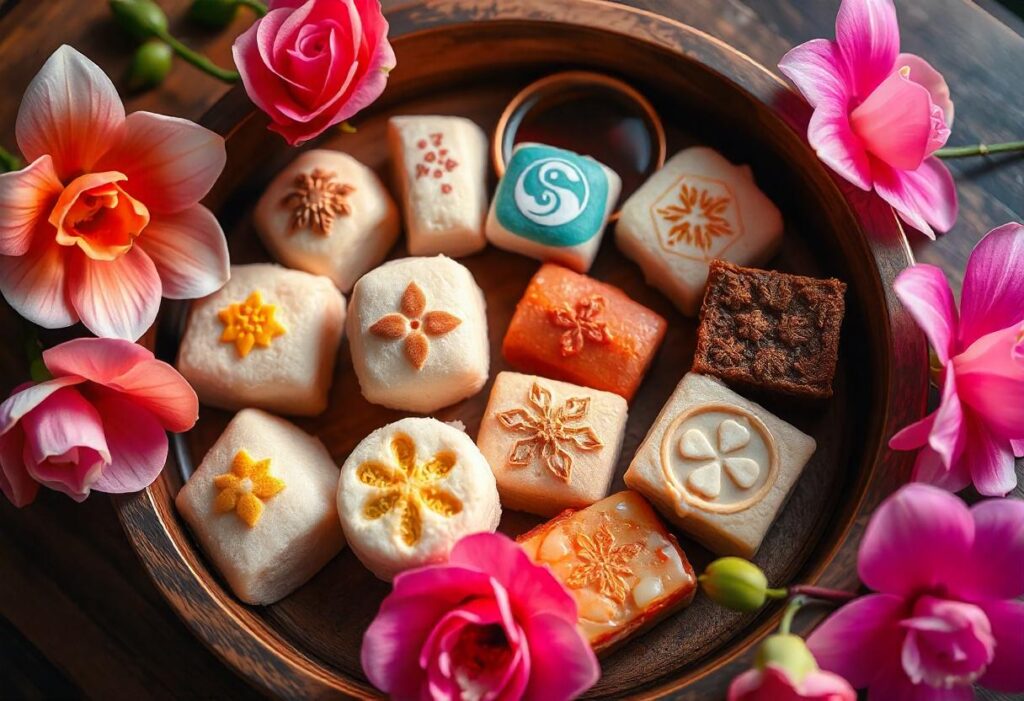When one thinks of Japanese cuisine, savory staples like sushi, ramen, or tempura often come to mind. Yet, Japan’s culinary legacy extends far beyond main courses, embracing a world of delicate sweets and confections. From daifuku and dorayaki to airy matcha chiffon cakes, japanese dessert recipes represent centuries of craftsmanship, seasonal awareness, and an emphasis on harmony and subtlety in every bite.
Unlike many Western desserts, Japanese sweets focus on balance rather than excess. They highlight the natural flavors of ingredients like azuki beans, matcha, sweet potatoes, and seasonal fruits. Each dessert not only pleases the palate but also charms the eye with artistic presentation.
In this guide, we’ll explore the history behind Japanese desserts, the key ingredients that define their unique flavor profiles, and a range of traditional and modern recipes you can recreate at home. Whether you’re new to Japanese sweets or already an aficionado, these japanese dessert recipes will inspire you to discover new techniques, experiment with flavors, and appreciate the subtle elegance that defines Japanese confectionery.

History & Cultural Context
From Courtly Treats to Everyday Delights
The roots of japanese dessert recipes lie in the nation’s ancient past. Early sweets, known as “kashi,” were influenced by China and often featured simple fruits or nuts. With the introduction of sugar via trade routes, desserts evolved into delicate treats served at imperial courts and during tea ceremonies. Confections like wagashi—traditional Japanese sweets—were meticulously crafted to complement the bitterness of matcha during formal tea rituals, symbolizing harmony and respect.
Rituals, Seasons, and Regional Variations
Over time, Japanese desserts escaped the courts and became accessible to commoners. Regional variations emerged, drawing on local produce and traditions. Sakura mochi might herald the arrival of spring, while chestnut and sweet potato treats mark autumn’s embrace. This seasonal focus remains central to Japanese dessert culture. Today, you’ll find wagashi shops selling creations that reflect the current season’s flora and flavors, each sweet offering a moment of mindfulness.
As Japan opened to Western influences in the late 19th century, new ingredients like chocolate and cream shaped modern desserts. Yet, the essence of Japanese confectionery—an emphasis on aesthetics, moderation, and nature’s cues—persisted. These qualities continue to inspire contemporary pastry chefs and home cooks alike.

Key Ingredients & Flavor Profile
Core Ingredients Defining Japanese Desserts
At the heart of japanese dessert recipes lies a shortlist of staples that create their distinct character. Azuki beans are cooked down into sweet pastes (anko) that fill mochi and pastries. Glutinous rice flour transforms into chewy mochi or dumplings. Matcha, ground green tea leaves, adds a subtle bitterness and vibrant color, while kanten (agar-agar) creates delicate jellies. Seasonal fruits—strawberries, persimmons, yuzu—brighten flavors.
Balancing Sweetness and Umami
Japanese desserts rarely scream sweetness. Instead, they whisper it. Sugar, honey, or syrup is used sparingly. The result is a refined flavor profile where sweetness never overwhelms. Desserts often embrace gentle contrasts—umami-rich matcha next to mellow anko, or creamy sweet potato paired with delicate cream. The result is harmony in every bite, a culinary philosophy extending beyond desserts to all Japanese cuisine.
This moderated sweetness is why Japanese desserts appeal to those seeking lighter, subtler treats. Pairing them with a traditional meal or enjoying them alone allows each element of flavor and texture to shine. Whether you’re working with traditional wagashi recipes or experimenting with modern desserts, understanding these ingredients ensures authenticity and satisfaction.

Traditional Japanese Dessert Recipes
Classic Wagashi: Mochi, Daifuku & Dorayaki
Traditional japanese dessert recipes often center on wagashi, intricate confections crafted for tea ceremonies or seasonal celebrations. Mochi, made from pounded glutinous rice, has a chewy texture and delicate sweetness. Daifuku—mochi stuffed with sweet bean paste or fresh fruit—offers a satisfying interplay of textures. Dorayaki, two fluffy pancakes sandwiched around anko, exemplifies how simple components yield profound flavors.
Seasonal Specialties: Sakura Mochi and Yokan
As the seasons change, so do the desserts. In spring, sakura mochi captures the essence of cherry blossoms with subtly floral notes. Yokan, a thick jelly made from azuki bean paste and kanten, is often molded into nature-inspired shapes. These sweets invite contemplation, encouraging you to savor each moment and season.
For those exploring Japanese sweets for the first time, start with a classic daifuku or dorayaki. They are approachable and require relatively few specialty ingredients. Mastering these staples builds confidence before attempting more intricate wagashi.

Modern Twists & International Influences
Fusion Desserts: Matcha Tiramisu and Strawberry Shortcake
Globalization introduced Western baking techniques to Japan, resulting in delightful fusions. Matcha tiramisu marries Italian mascarpone with green tea’s bitter elegance. Japanese-style strawberry shortcake is lighter and less sweet than its Western counterpart, focusing on airy sponge cake and fresh cream. Cheesecakes, custards, and puddings infused with Japanese flavors also flourish.
Creative Uses of Sweet Potato and Beyond
The Japanese sweet potato, prized for its natural sweetness and creamy texture, frequently appears in desserts. From sweet potato yokan to airy sweet potato chiffon cake, this root adds complexity and nutrition. For inspiration, explore this mashed Japanese sweet potato recipe—while it’s a side dish, you can adapt the mashed sweet potato as a base for desserts like sweet potato mont blancs or fillings for pastries.
Modern Japanese dessert chefs are unafraid to experiment. They incorporate chocolate, nuts, exotic fruits, and Western pastry techniques, always maintaining the Japanese ethos of balance. These desserts appeal to both traditionalists and newcomers, proving Japanese confectionery evolves while honoring its roots.

Pairing Desserts & Serving Suggestions
Complementing a Full Japanese Meal
Desserts often act as a delicate finale to a traditional Japanese meal. Imagine ending a savory feast—perhaps one featuring grilled meats or seafood—with a gentle sweet note. If you’ve enjoyed a main course inspired by these authentic Japanese short ribs or a light seafood dish like this japanese scallop recipe, a small wagashi can cleanse the palate.
Contrasting Textures & Flavors
For a well-rounded experience, pair your dessert with tea. Matcha’s bitterness complements sweet bean paste, while a floral green tea might enhance fruity confections. If you’ve tried savory delights like japanese barbecue sauce recipes, finishing with a subtle dessert offers balance. A piece of yokan or a single daifuku provides a gentle transition from the savory umami flavors to sweet simplicity.
Additionally, consider combining desserts with mild snacks. A slice of castella sponge cake pairs well with seasonal fruits. Light bean jelly or sweet potato pudding can follow a hearty main dish like the richly flavored minced beef japanese recipe for a well-balanced culinary adventure.

Practical Tips & Techniques for Homemade Desserts
Mastering Mochi and Anko
Working with glutinous rice flour can be tricky. When making mochi, keep your hands and surfaces lightly dusted to avoid stickiness. For anko, start with dried azuki beans, simmer them until soft, then sweeten gradually. Adjust sweetness to taste—remember that subtlety is key. Perfecting these fundamentals opens the door to countless japanese dessert recipes.
Using Seasonal Fruits and Ingredients
Embrace the seasons. In autumn, roasted sweet potatoes or persimmons can star in your desserts. In spring, incorporate strawberries or sakura flavors. If you’re curious about sweet potatoes in desserts, trying a japanese sweet potato air fryer recipe can inspire you to adapt the technique for a dessert course—simply add a hint of syrup or whipped cream.
Presentation & Mindfulness
Japanese desserts emphasize aesthetics and mindfulness. Invest in simple, elegant serving ware. Keep portions small and arranged artfully. Pay attention to color contrasts—vibrant green matcha, pale mochi, and jewel-toned fruits. Slow down, taste each element, and appreciate the craft that went into your dessert.

FAQs
Common Questions About Japanese Dessert Recipes
Q1: Les desserts japonais sont-ils toujours à base de haricots rouges ?
Non. Bien que l’anko (pâte de haricots rouges) soit un ingrédient clé, il existe de nombreux desserts sans anko. Matcha, fruits, patates douces, et même chocolat apparaissent dans les japanese dessert recipes.
Q2: Peut-on réduire le sucre dans ces recettes ?
Absolument. La plupart des desserts japonais sont déjà moins sucrés que leurs équivalents occidentaux, mais vous pouvez ajuster la quantité de sucre selon votre goût. Commencez avec moins, goûtez, puis ajoutez si nécessaire.
Q3: Est-il nécessaire d’avoir des ingrédients spécifiques comme le matcha ou le kanten ?
Ils ne sont pas indispensables, mais ils contribuent à l’authenticité. Vous pouvez commencer par des desserts simples, comme des fruits avec du sirop léger, puis progressivement introduire du matcha, du kanten ou de la farine de riz gluant à mesure que vous gagnez en confiance.
Q4: Peut-on associer ces desserts à d’autres plats japonais ?
Oui. Après un repas salé, par exemple un japanese bbq sauce chicken recipe, un petit dessert, comme un daifuku ou un morceau de castella, peut parfaitement clôturer le repas.
Q5: Où trouver les ingrédients ?
Les supermarchés asiatiques, épiceries spécialisées ou boutiques en ligne proposent souvent farine de riz gluant, matcha culinaire, anko en boîte, et plus. Recherchez des marques réputées pour une meilleure qualité.
Q6: Peut-on préparer ces desserts à l’avance ?
Certains, comme le yokan, se conservent quelques jours au réfrigérateur. D’autres, comme la mochi fraîche, sont meilleurs le jour même. Consultez la recette pour connaître la durée de conservation idéale.

Conclusion of Japanese Dessert Recipes
Japanese dessert recipes invite you into a world where flavors are gentle, presentations are artful, and each bite encourages reflection. From centuries-old wagashi traditions to modern fusions with Western pastries, these sweets encapsulate Japan’s culinary philosophy: balance, seasonality, and respect for ingredients.
As you explore Japanese desserts, you’ll discover that you don’t need elaborate techniques or excessive sweetness to impress. A simple daifuku can carry just as much meaning as a complex mousse cake if made with care and sincerity. Pair these treats with a warm cup of tea, or enjoy them after a savory Japanese meal, allowing their subtle notes to linger and delight.
In essence, mastering japanese dessert recipes is not just about the final dish—it’s about embracing a mindset of mindfulness and appreciation. Let these treats inspire you to experiment, refine your palate, and savor the quiet elegance that makes Japanese desserts unique.

Japanese Dessert Recipes
